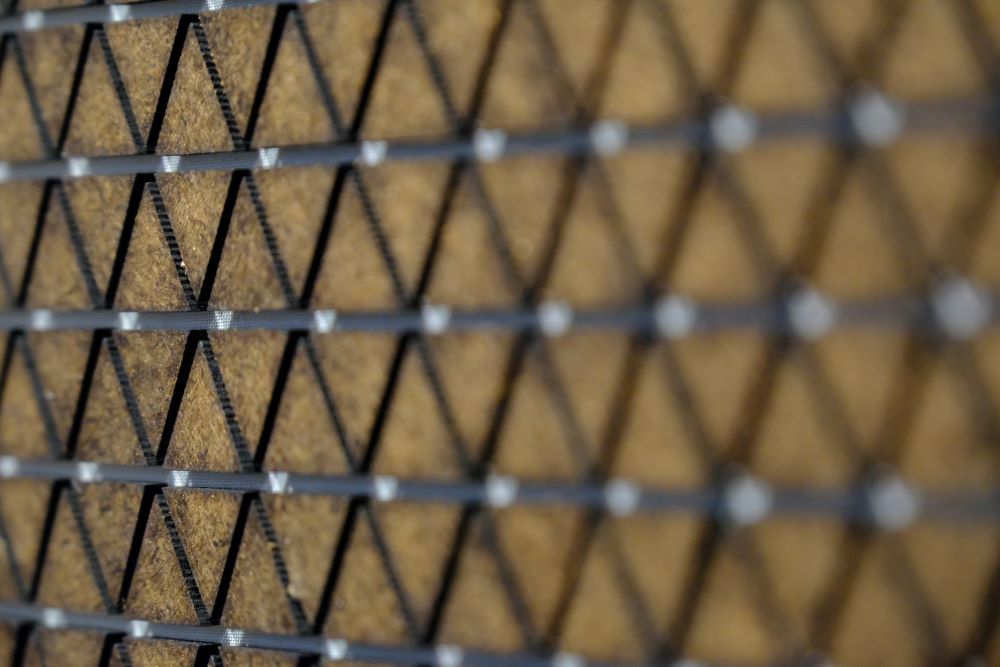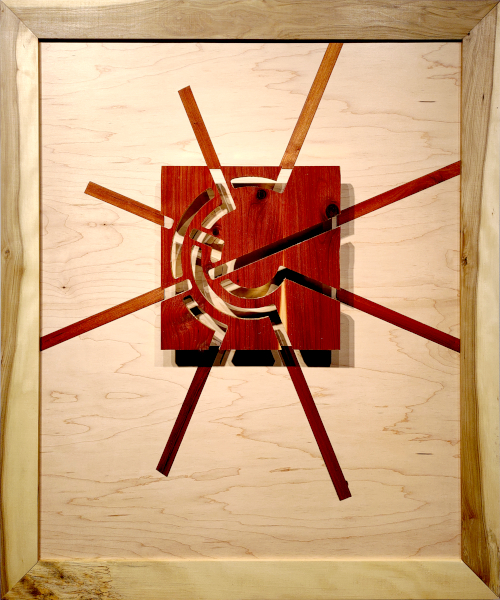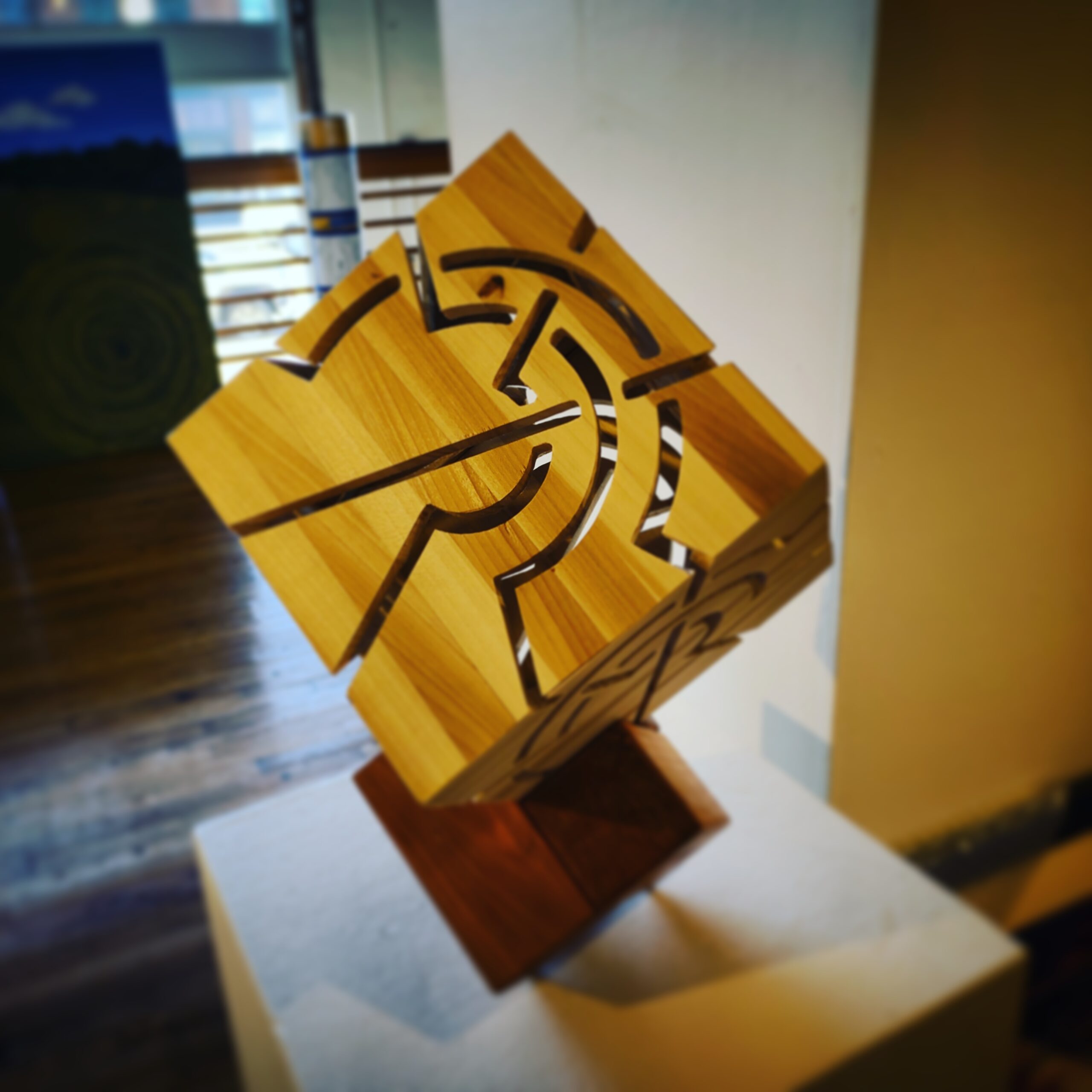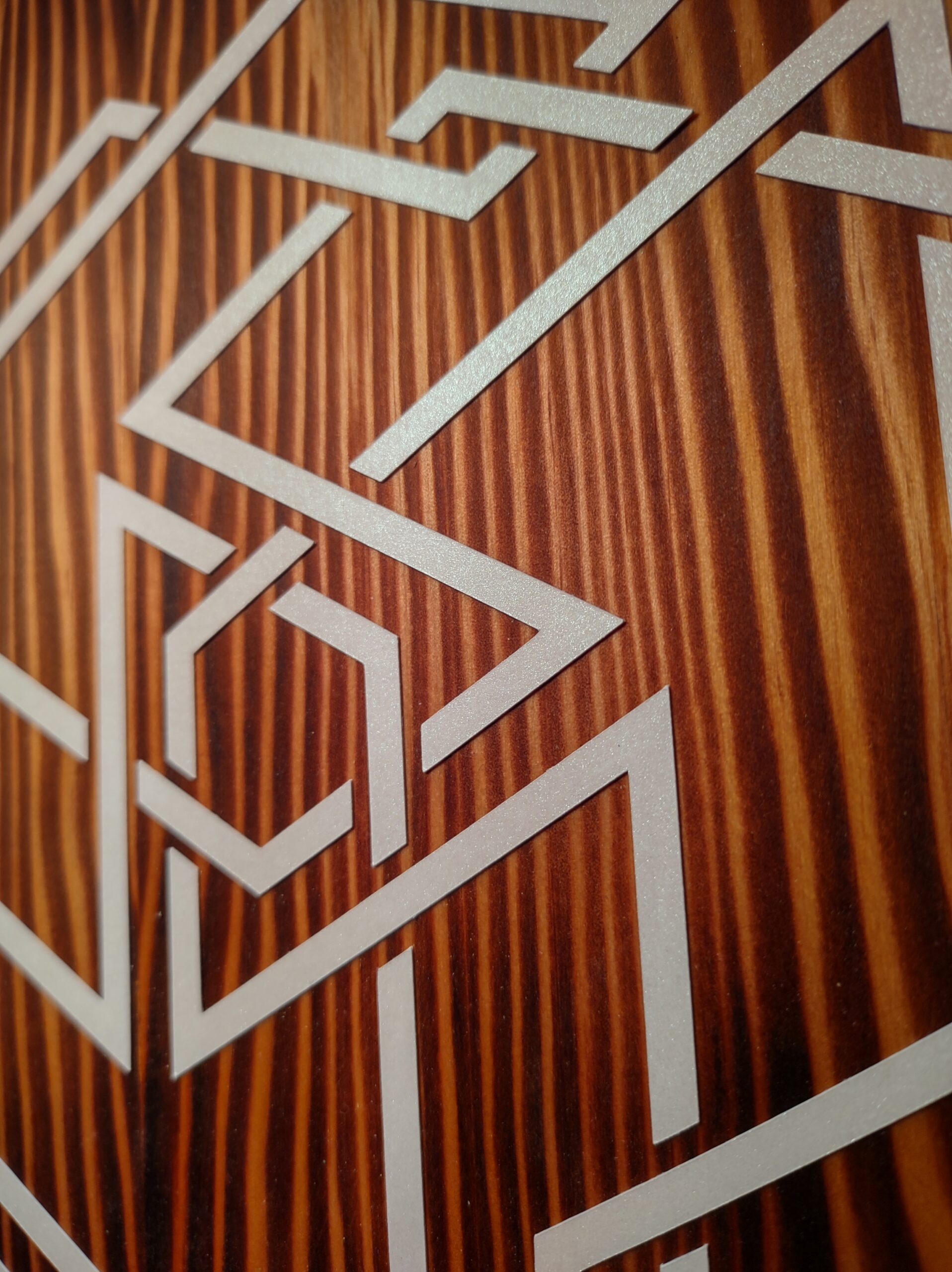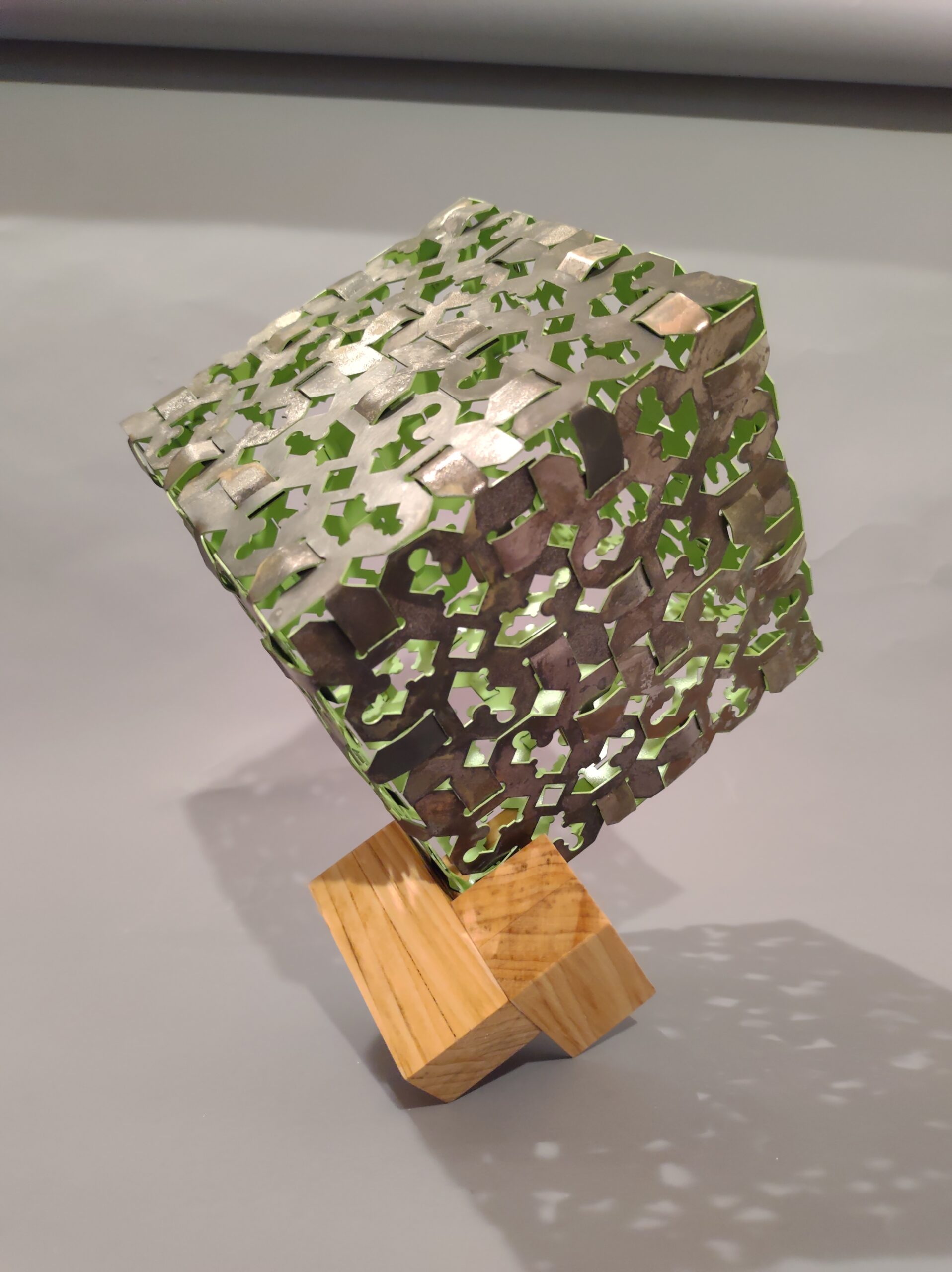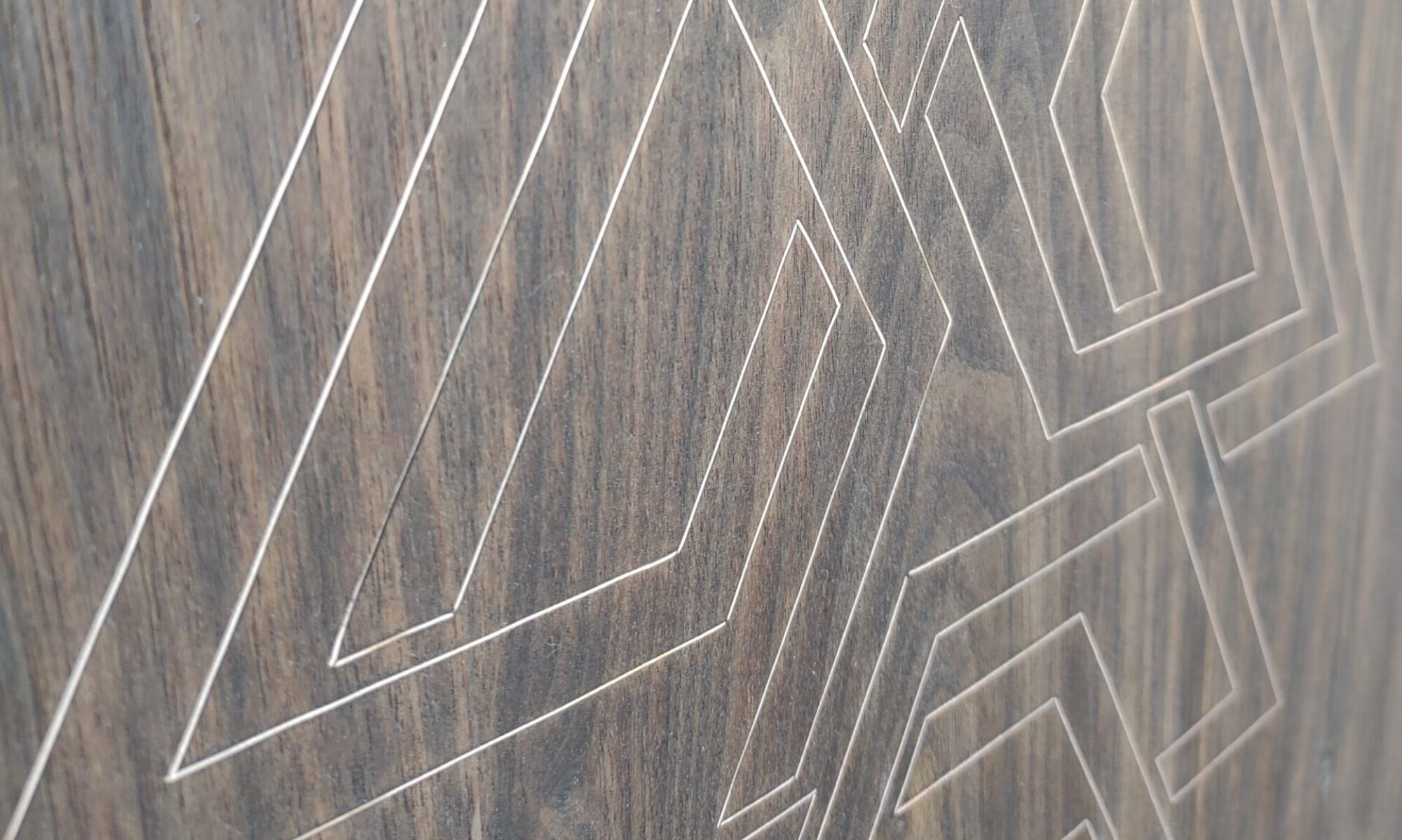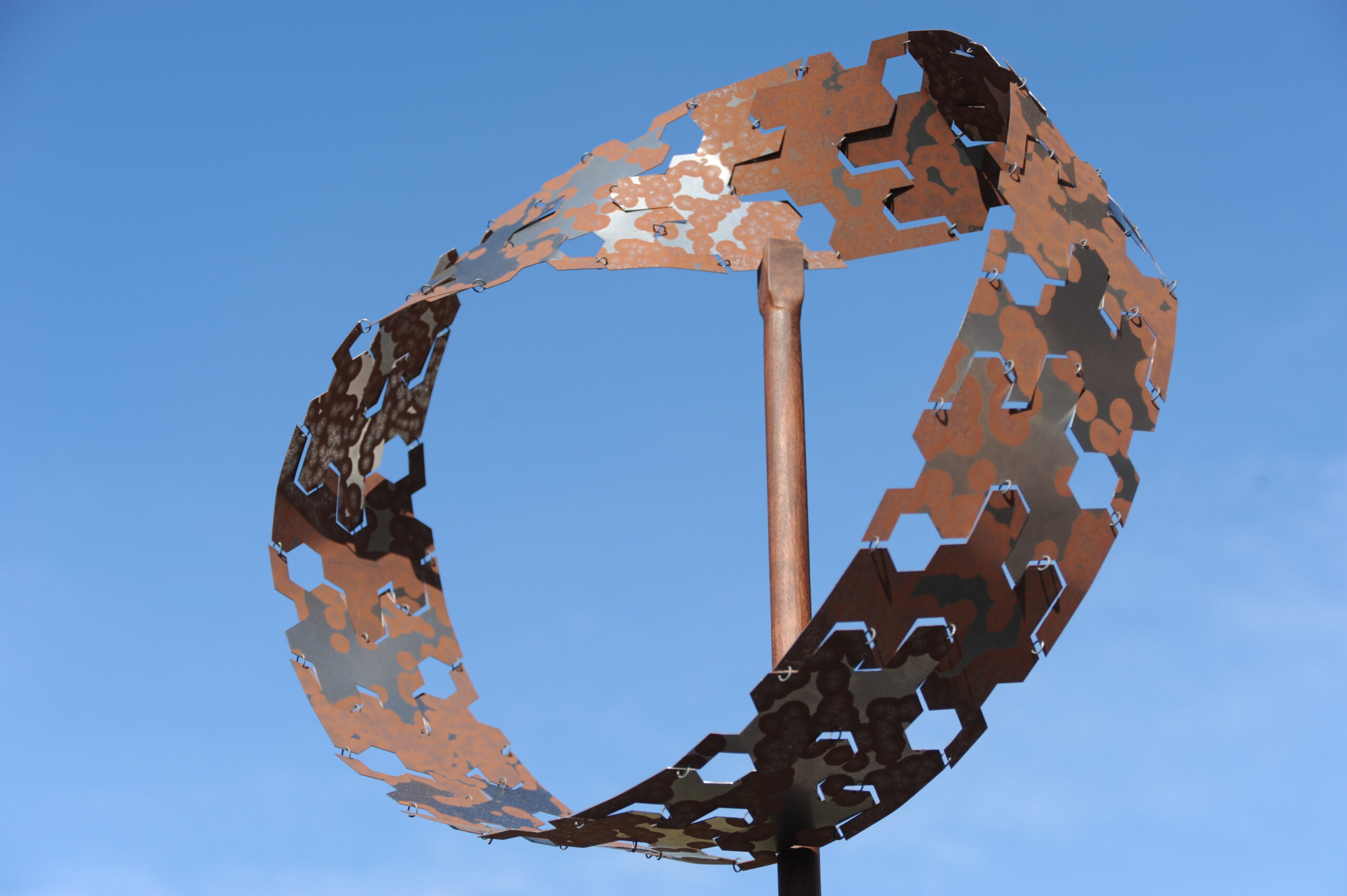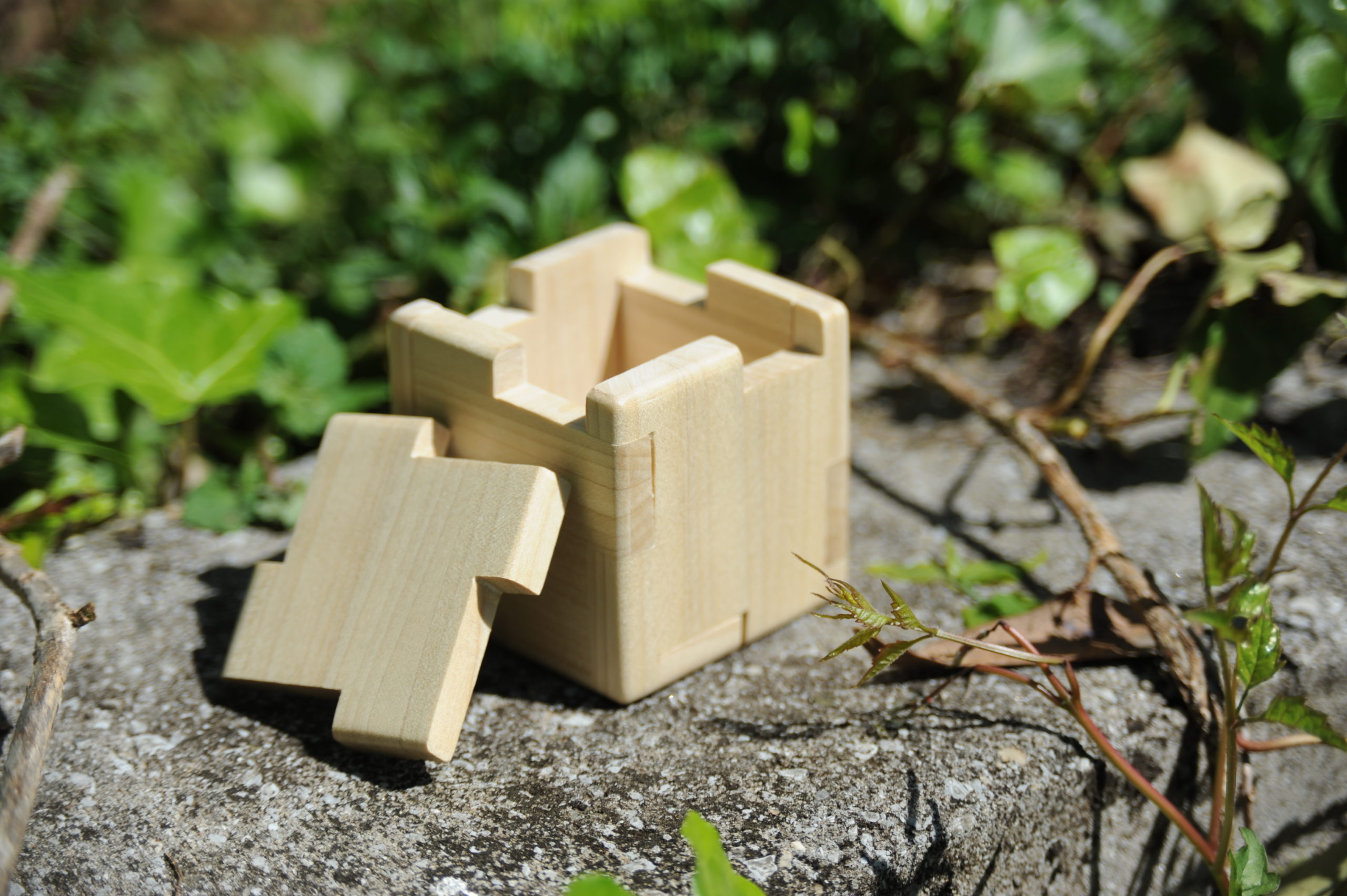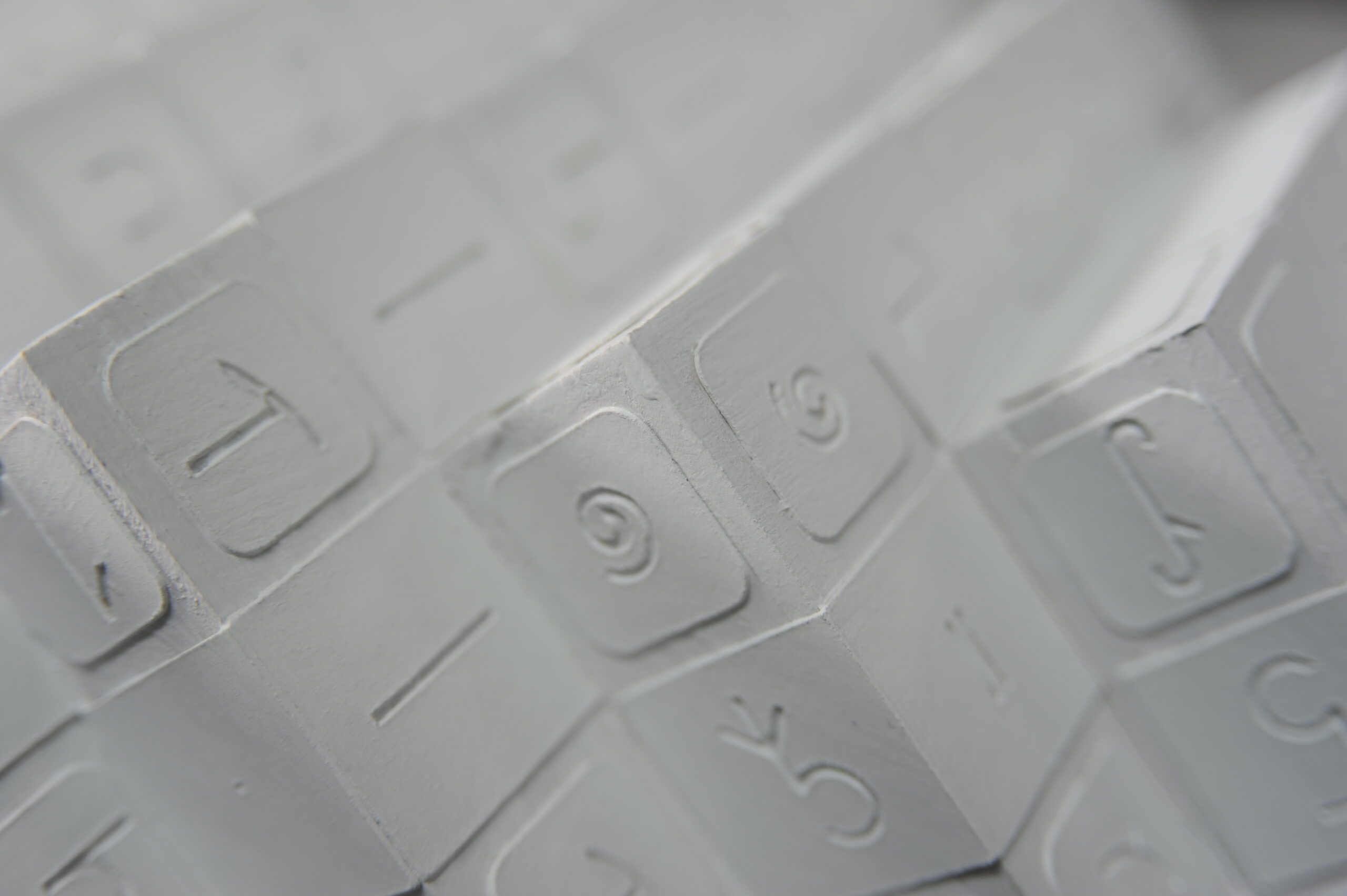Tag: wood
-

surface-tiling curve hexahedron set (И 1-4)
a set of cubes surfaced with four iterations of a surface-tiling curve
-
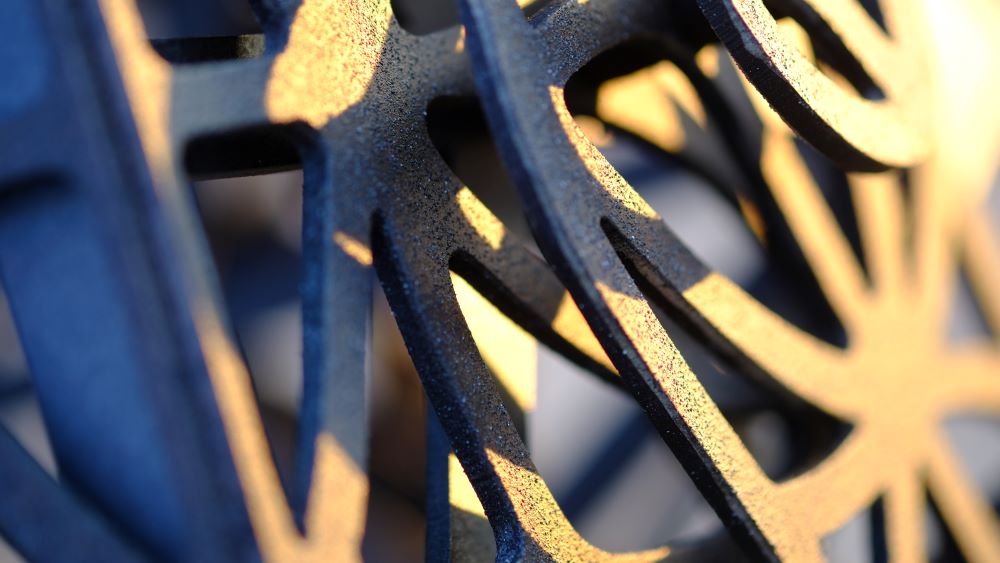
dead temple visions sculpture artifacts
a sculpture with several iterations, made for the Dead Temple Visions sound film
-

surface-tiling curve deltahedron set (И 3)
folded, regular deltahedra tiled with the same curve segment
-

perspective hex
Eight knotted hexagons cover the surface of a cube in a pattern which is identical on each face of the solid.
-

branching unknot
Two unknots are arranged vertically above a charred wood base. The shape of the metal makes self-supporting convex and concave arrangements possible.
-
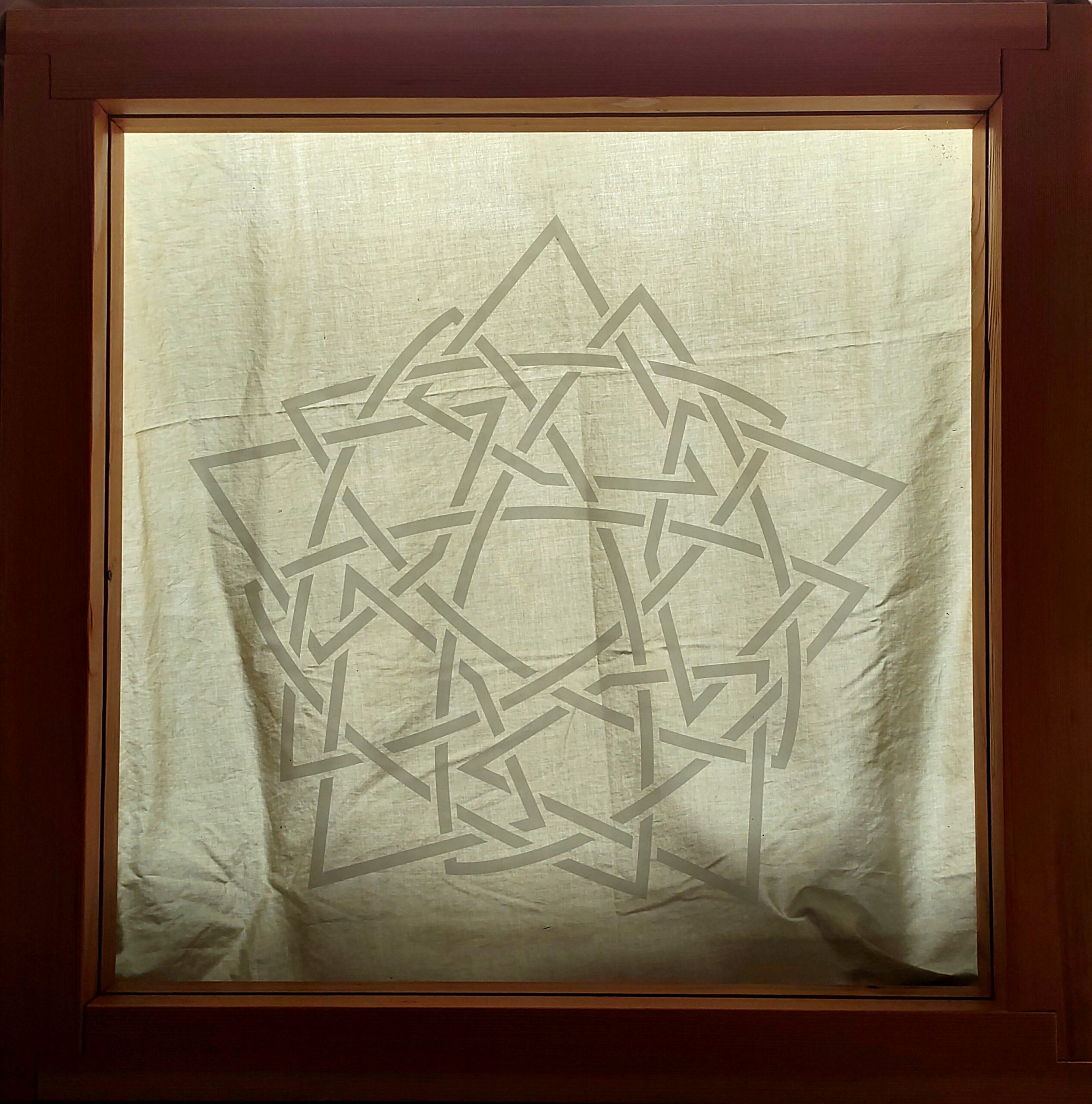
penta angle swirl
A unicursal decagonal star intersects five chained quadrilaterals. The chain gives the impression of a five-pointed star.
-

isometric hex knot
Outlined knot segments are inlaid with copper wire. Each segment follows a path which eventually returns to its origin.
-

exploded tetrahedron divided by surface-tiling curve И 1
a surface-tiling curve slices a tetrahedron into two identical folded shapes
-

exploded hexahedron tiled with a plane-filling curve
A single line bisects a hollow cube into two mirrored sections.
-
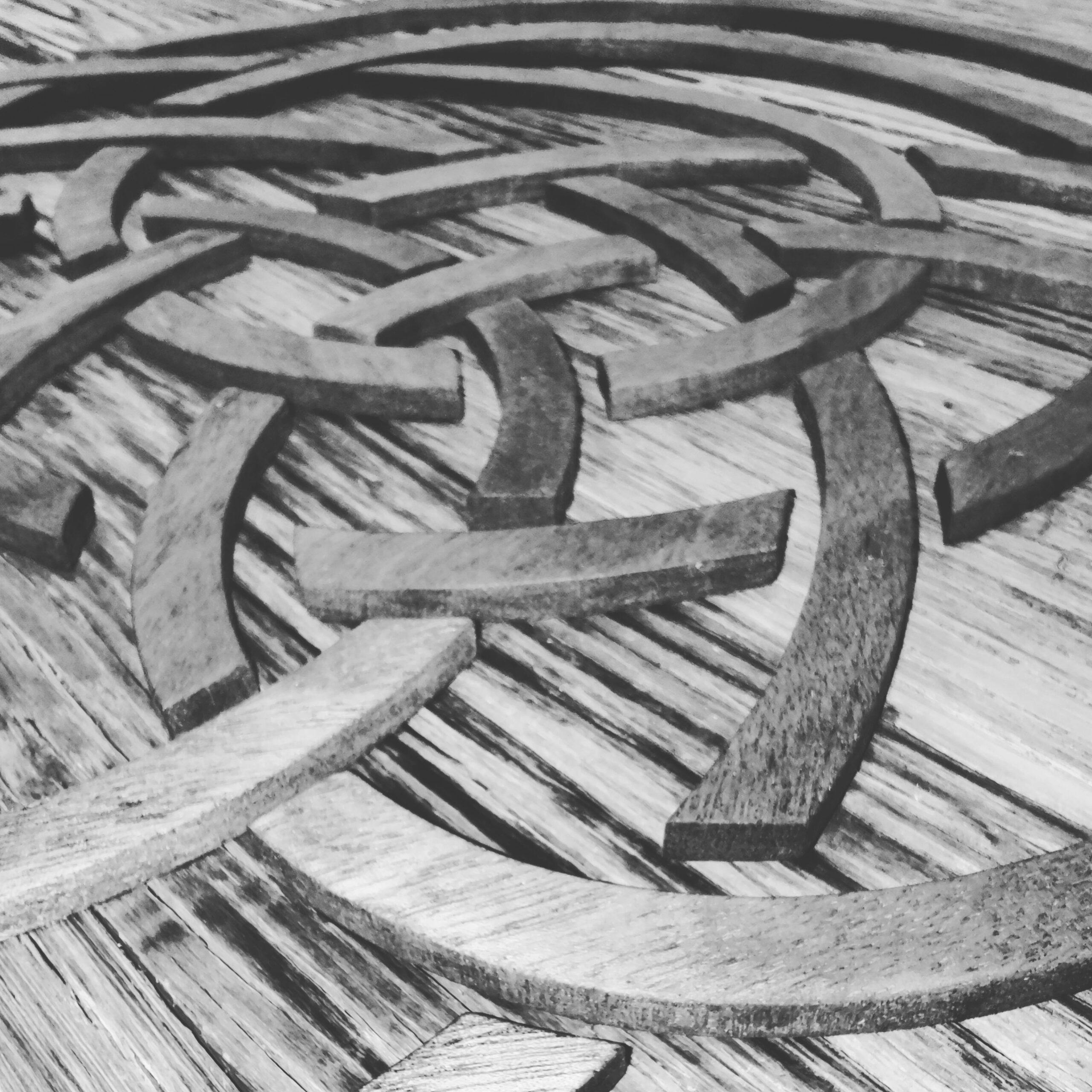
unicursal spiral tercet
Intersecting spirals become one line. The line can be traced from any point back to its origin.
-
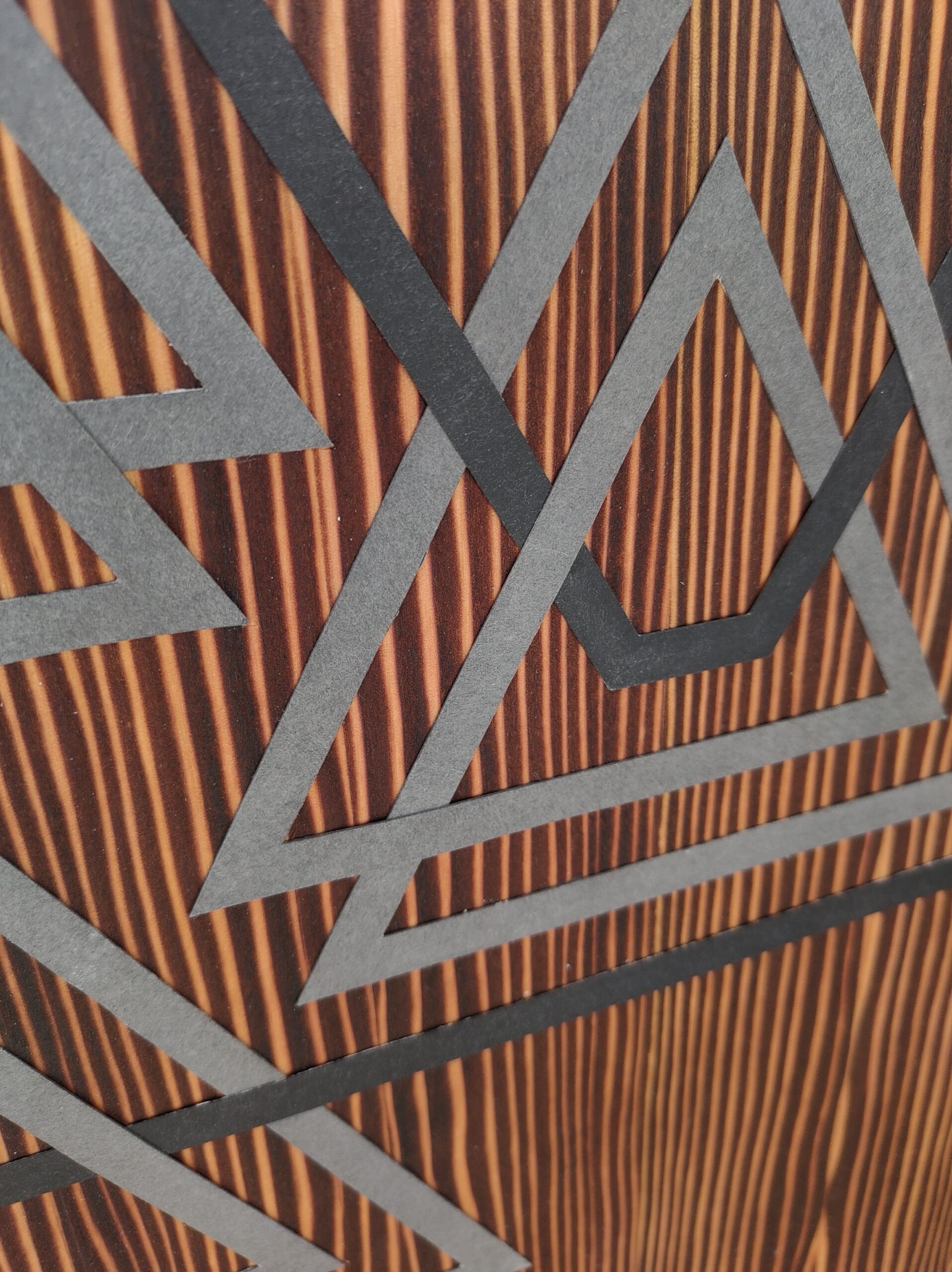
self-intersecting tercet knots with encompassment
Three triangular twists are abound together by an encompassing shape echoing the group’s perimeter. The way the paper is cut and overlapped gives the illusion that each of the four main components are made of single pieces of paper. You have to cheat a little to give the illusion of self-intersecting lines made out of a…
-

projected isometric tercet knot
This is a double-lined, triple-component knot based on an isometric grid. The rules of knot making are slightly bent with the double line, but half the fun of making your own system is breaking its rules. It is “projected” is because its construction uses small wooden dowels to lift the individual pieces above the surface.…
-
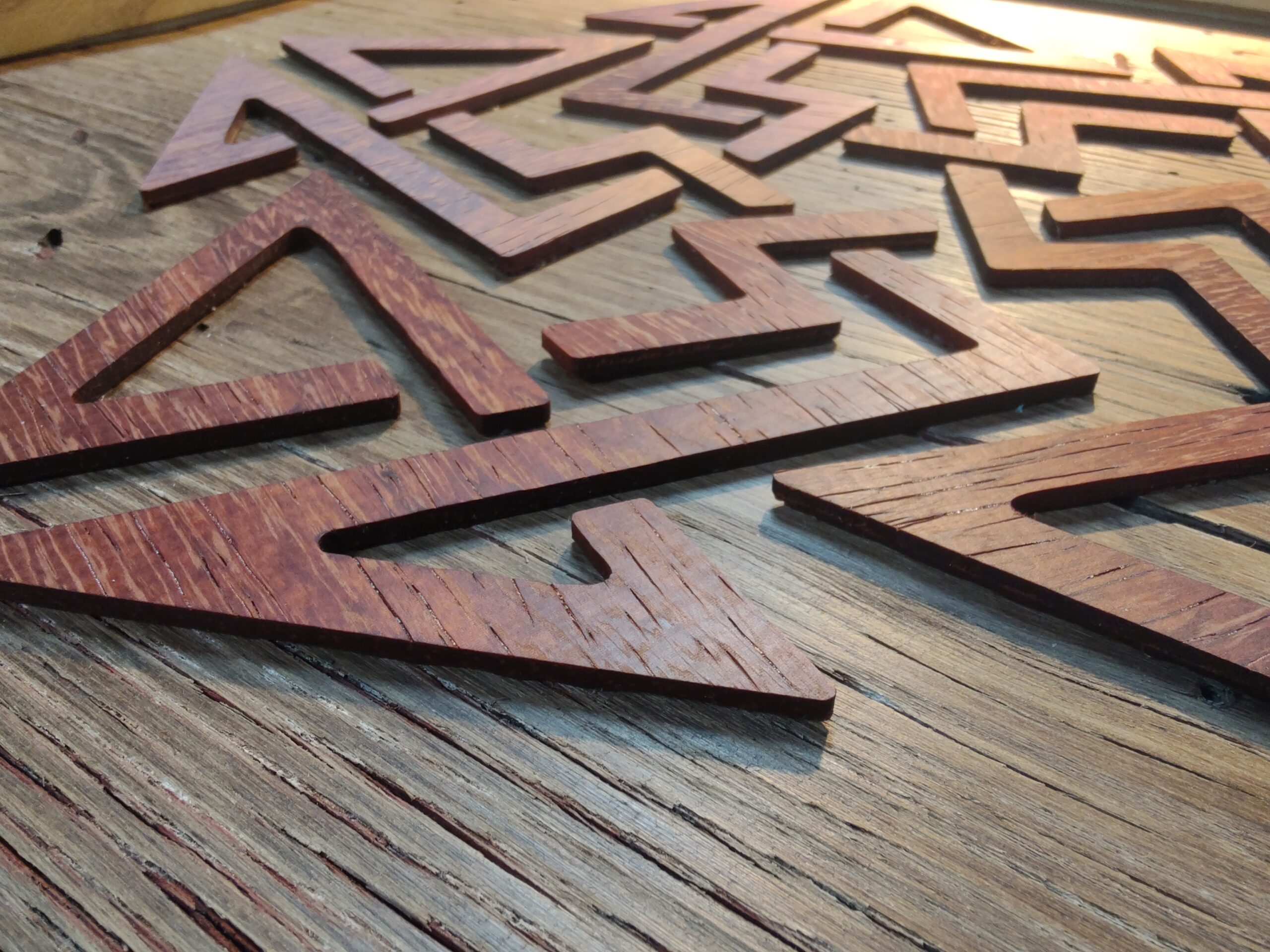
unicursal pentad knot
Follow the (implied) line with your eye. The line is unicursal, meaning there’s only one line. At first you might be tempted to assume there are five sections, and of course there are, but the radial symmetry is just a property of this particular line. These are probably the most difficult knots to design because…





